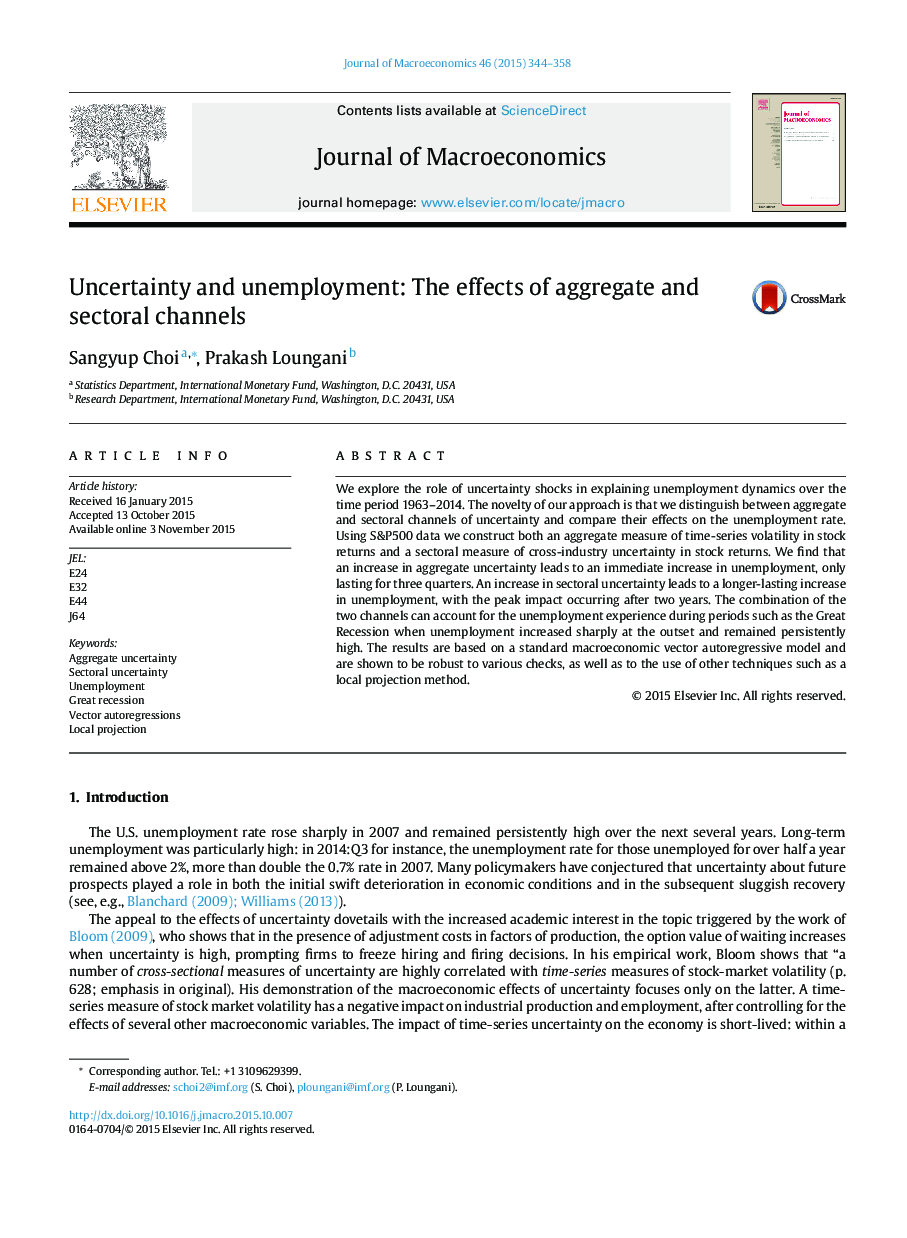| Article ID | Journal | Published Year | Pages | File Type |
|---|---|---|---|---|
| 965746 | Journal of Macroeconomics | 2015 | 15 Pages |
Abstract
We explore the role of uncertainty shocks in explaining unemployment dynamics over the time period 1963-2014. The novelty of our approach is that we distinguish between aggregate and sectoral channels of uncertainty and compare their effects on the unemployment rate. Using S&P500 data we construct both an aggregate measure of time-series volatility in stock returns and a sectoral measure of cross-industry uncertainty in stock returns. We find that an increase in aggregate uncertainty leads to an immediate increase in unemployment, only lasting for three quarters. An increase in sectoral uncertainty leads to a longer-lasting increase in unemployment, with the peak impact occurring after two years. The combination of the two channels can account for the unemployment experience during periods such as the Great Recession when unemployment increased sharply at the outset and remained persistently high. The results are based on a standard macroeconomic vector autoregressive model and are shown to be robust to various checks, as well as to the use of other techniques such as a local projection method.
Keywords
Related Topics
Social Sciences and Humanities
Economics, Econometrics and Finance
Economics and Econometrics
Authors
Sangyup Choi, Prakash Loungani,
